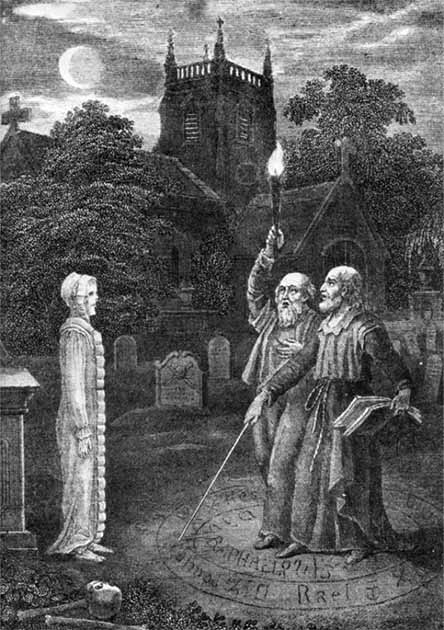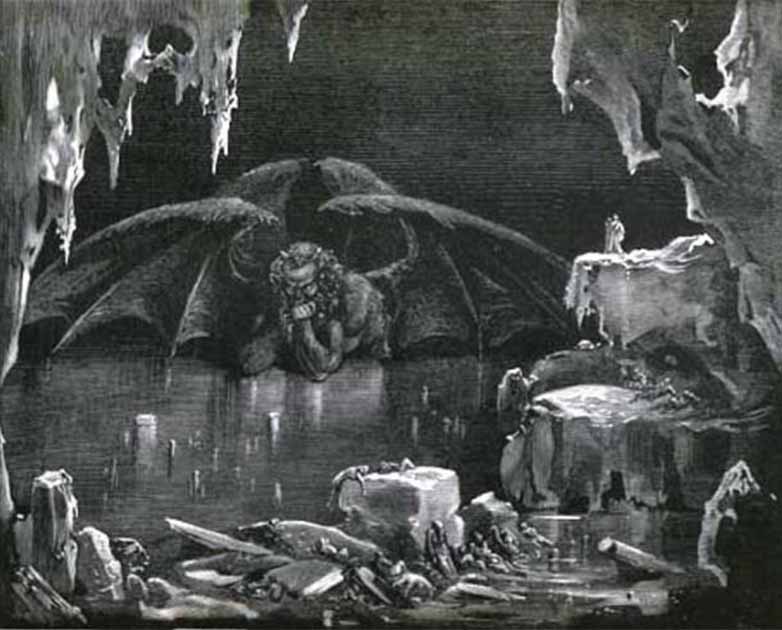The Grand Grimoire, often known as the “Red Dragon” or the “Gospel of Satan”, is a medieval spellbook reputed to hold incredible power. It is said to be the work of a mysterious figure called Honorius of Thebes, who supposedly channeled the Devil to write it. It ranks as one of the most powerful occult books available and is said to include instructions on how to summon demons.
This spellbook is commonly considered to originate from the 16th century. However, during the 18th century’s French “grimoire craze”, a version of the Grand Grimoire was created and subsequently published in the next century. The original Grand Grimoire, or perhaps a duplicate, is reportedly stored in the Vatican Secret Archives, inaccessible to the public.
While the exact etymology of “grimoire” remains a topic of debate, it’s broadly accepted that it springs from the Old French term “grammaire”. Initially, this word denoted books in general, particularly those written in Latin.
- The Book of Shadows: Is There a Secret Witches’ Spellbook?
- The Sworn Book of Honorius: Christian Magic?
As time passed, the term gradually took on occult associations, and now grimoire refers to textbooks used in the occult. These books typically contain instructions for crafting magical amulets and talismans, casting spells, and performing rituals to invoke supernatural entities, including angels and demons.
Most Powerful of Grimoires
Often held as one of the most influential grimoires in existence, many believe the Grand Grimoire was penned in 1520, and later unearthed in a so-called “Tomb of Solomon” in 1750. Furthermore, it’s speculated that this grimoire was inscribed in either Biblical Hebrew or Aramaic. This supposed link to the Biblical King Solomon, coupled with the ancient language it’s believed to be written in, surely magnify the Grand Grimoire’s reputation as a potent magic book.

The Grand Grimoire comprises four sections, and allegedly resides in the Vatican Secret Archives. Legend has it that Honorius of Thebes, who was purportedly under satanic possession, wrote the Grand Grimoire. This occult manuscript reportedly contains magical incantations and a detailed narrative on the gradual corruption and satanic conversion of newly-appointed popes.
However, the most notorious content of the Grand Grimoire is the guidance it purportedly provides on summoning Lucifer or Lucifuge Rofocale. One required tool for this ritual is a Blasting Rod, used to compel the invoked Lucifer into submission.

Following this, a pact with the Devil can be made. As a result, the Grand Grimoire includes a section called the “Genuine Sanctum Regnum, or the True Method of Making Pacts”. Among other requirements, the individual performing this ritual would need an Ematille stone and two consecrated candles to establish a Triangle of Pacts for protection against summoned spirits.
- Practical Magic: The Summoning Spells of The Book of Abramelin
- The Soothsayer, the Sibylline Books and the Last King of Rome
Although the original Grand Grimoire or its copy is housed in the Vatican Secret Archive, an iteration was developed during the 18th-century surge in the production of inexpensive grimoires in France.
This variant of the Grand Grimoire was first circulated in the 19th century, and reached various French colonies of that era. Consequently, the Grand Grimoire continues to be widely employed in former French colonial territories in the Caribbean, notably Haiti, where it is known as “Le Veritable Dragon Rouge”.
Top image: If anyone knows the secrets of the Grand Grimoire, and the power those secrets can grant, then it is the Vatican. Source: (Plashing Vole/ CC BY-NC 2.0).
By Ḏḥwty